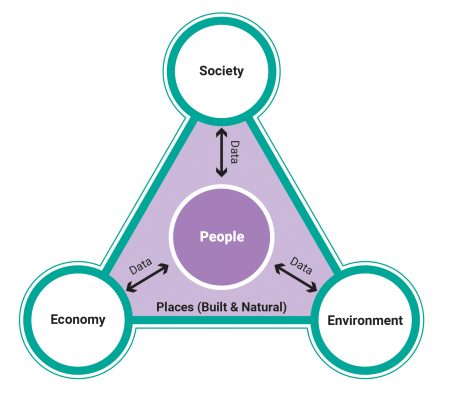Our Vision
Our vision for the application of digital technologies in planning is to empower communities to drive positive change while leveraging the planning system to enhance both the built and natural environments through a holistic approach. We aim to equip planners with the skills and digital tools needed to effectively address the key contemporary challenges facing our cities and regions.
The grand challenges of climate change, biodiversity decline, inequality, aging, health and disease, mobility, automation, and regeneration provide a generic focus for planning but the problem inherent to building more efficient and equitable places requires that we use the new tools in the best ways possible and this requires a reinvigoration of the skills that planners need to employ in their plan-making and place-making.
When computers were first used in planning over 60 years ago, information and scientific tools came onto the agenda which planners could utilise to help prepare plans and administer the planning systems. But as computation became universal, as computers were scaled down to become embedded in the city itself, in government and commerce and in the planning system, the array of digital issues has dramatically widened and our vision for the Task Force is to provide a coherent perspective on all its significant aspects.

The Concept of an Integrated Digitally Enabled Approach to Spatial Planning
In light of the transition to a circular economy and based on the fourth Industrial revolution’s focus on redesigning systems, we propose a transformative digitalisation of spatial planning – a community-focused, scientifically-based, and digitally-enabled decision-making process. It will generate better engagement in the plan-making process, enhance efficiency and optimise the value of data, and it will allow stakeholders, planners, designers, and policymakers to think intelligently through an evidence-based decision-making process. Participation using digital technologies for communication and design are central to its transformation.
